Of the many roles of the teacher-librarian, one that holds great importance is providing the students with access to quality reference resources. The teacher-librarian is responsible for keeping the library resource collections up to date and current, evaluating resources regularly, weeding and selecting appropriate resources, developing student research skills and making recommendations. The teacher-librarian is tasked with selecting reference resources that encourage the development of literacy skills. The school library’s reference collection should reach curriculum objectives and learning goals, and encourage critical thinking skills. The process of evaluating and selecting reference resources remains an important aspect of any school library. The focus of this assignment will be to evaluate an existing factbook from my school library and to replace it with a more suitable factbook based on Reidling’s evaluation and selection criteria.
What is a factbook?
Riedling describes factbooks as, “basic reference tools providing basic facts on popular topics such as countries, sports, or time periods. Factbooks are used to quickly answer basic questions about specialized subjects.” (Riedling, 2013, p.37)
Riedling provides the following criteria to guide the process of evaluating and selecting factbooks, directories, almanacs, yearbooks, and handbooks.
Scope
- The source should determine what is covered – organization, geographic areas, individuals, etc.
- The comprehensiveness of the source should be evident within the stated scope.
- The tiles, preface, or introductory materials often give pertinent information.
Currency
- Note the frequency of the publication and how often it is updated.
Accuracy
- This is the most important characteristic of works that present factual information
- Test accuracy by reading reviews, comparing data from different sources, and rely on experts in the field.
- The statistics should be recent and from official, identified sources.
Format
- Entries should be clearly arranged and organized in a logical manner, consistent throughout the source.
- The index in a fact source should be helpful, accurate, and consistent in style and terminology.
- Electronic sources should have an easy-to-use search interface, advanced searching capabilities, and a consistent and easy-to-understand navigation bar. (Reidling, 2013, p.40)
For the purpose of evaluating and selecting reference factbooks, we will use the following rubric based on Reidling’s evaluation and selection criteria.
Figure 2
Red highlighted criteria describe the Creative Education Inc. factbook set.
Green highlighted criteria describe the DK Smithsonian Super Space factbook.
Yellow highlighted criteria describe both Creative Education and DK Smithsonian factbooks.
The reference resource I will be evaluating is a six-factbook set on the topic of Outer Space created by Michael George and published in 1991 by Creative Education, Inc. There are six reference factbooks in the collection: Mars, The Sun, Stars, The Moon, Space Exploration and Galaxies.
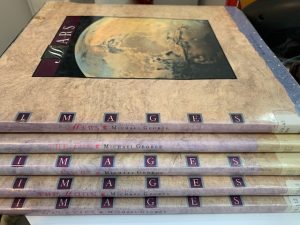
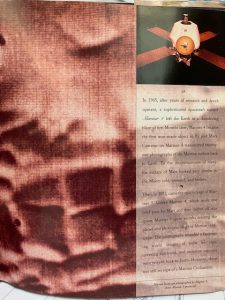
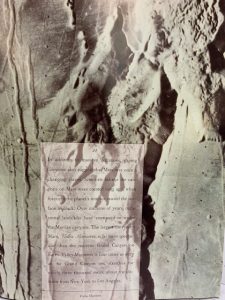
Image by Creative Education Inc.Images, Mars
There are many problems surrounding this set of factbooks. The first being that my school library’s set is incomplete, missing the title Space Exploration. The scope of the information is quite limited. Although the information is somewhat related to the topic, the information provided on the planets is limited to Mars. The factbooks cover some subtopics but they are not elaborated and do not have their own subsections. Students would find it very difficult to find the answers to the questions they are looking for if they had to first read through the entire book. Each book in the set has a short introductory section that includes quotes and some clues as to the book’s topics printed on the inside sleeve. Unfortunately, the quotes are not properly cited and there is no way of knowing who they belong to. In terms of the book sets currency, it was published in 1991. There was been much more information gathered about our universe since this book was published. The information provided is no longer relevant in the year 2020. The set does not produce a bibliography indicating from where the information was taken and no acknowledgments have been made. The set is not easy to use. The layout of the pictures and text boxes do not help the reader locate the information quickly. The information is written in long paragraphs with no separation in the type of information they are providing. One unclear photo covers the whole of each page and there are no smaller images to indicate which topics being covered. There is no index, table of contents or glossary to aid in navigating through the information.
I have chosen a reference resource published by DK Smithsonian in 2019 entitled Super Space to replace the Creative Education Inc. set.
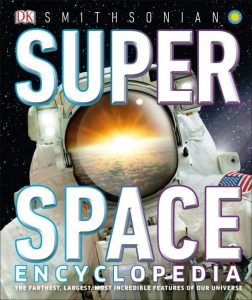

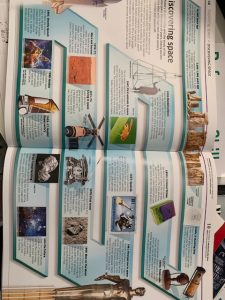 image by DK Smithsonian, 2019, Super Space
image by DK Smithsonian, 2019, Super Space
The scope of the information provided in this book is quite vast. The book explores the solar system, with a section on the planets, the sun, space anomalies, asteroids, and comets just to name a few. The content covers a wide range of topics and subtopics. There are sections about the stars, galaxies, space exploration and the night sky. The information is current and relevant for the year 2020. Each section includes an introductory page which unfortunately could be more extensive and detailed. The information provided is supported by a full page of acknowledgments. The information comes from reliable sources such as NASA, The Smithsonian Centre for Earth and Planetary Studies and The National Air and Space Museum. The manner in which the book is laid out allows the student to easily locate the specific information they are looking for. Each page explores a large topic broken down into smaller topics written in short paragraphs. The table of contents is printed in large type and is colour coded by section. Each section is also colour coded. The titles and subtitles are clearly marked on each page and there isn’t an overwhelming amount of information in each subsection. The text is easy to read and is accompanied by full colour, labeled images, photos or diagrams. The photos are clear and support the information provided on the page. There are an extensive and detailed index and glossary. Another great aspect of this book is that across the top of each page there is a timeline describing the progress of our knowledge of space and space exploration over time. The book is also littered with sections called Fast Facts which offer additional information about the topics. The excellent photos, diagrams, and specific information work together to enhance the student’s comprehension of the topic. This book is meant for students from grades 4 – 7. As my current school houses students from grades 4-8, this would be a perfect addition to our school library.

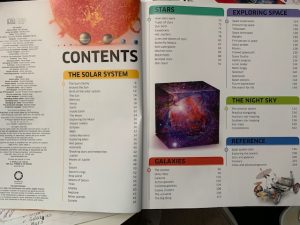
image by DK Smithsonian, 2019, Super Space
DK Smithsonian Super Space sells for a retail price of $31.99. It can be purchased through McNally Robinson, which is the book supplier that our current teacher-librarian deals with. Through McNally Robinson Book Seller, our school receives a 20% discount. I feel that this book is a great choice and a reasonable price. If would replace five Creative Education Inc. books and create space on the shelf in the 500 section of the library. Having this reference resource in a school library would benefit the students and teachers in answering questions related to outer space. This is consistent with Riedling’s idea of what a good reference resource should be.
“a good reference resource is one that serves to answer a question” (Riedling, 2013, p.17)
The main goal of the teacher-librarian is to offer the resources necessary to encourage the students to develop their literacy skills. Providing quality resources such as DK Smithsonian Super Space, that answer their questions will allow the students to grow in becoming life-long learners.
Reidling, Ann Marlow,. Loretta Shake, and Cynthia Houston. Reference Skills for the library media specialist: tools and tips. Worthington, Ohio, 2013
DK Smithsonian, Super Space, DK Publishing, 2019
George, Michael, Images, Mars, Creative Education 1991
George, Michael, Images, The Sun, Creative Education 1991
George, Michael, Images, Stars, Creative Education 1991
George, Michael, Images, The Moon, Creative Education 1991
George, Michael, Images, Galaxies, Creative Education 1991

Kathleen,
I love the DK books! The illustrations are great, there is a lot of interesting information given and they work well for most kids. Having worked extensively in SpEd my only concern would what could be used for students who experience sensory overload by text that has too many things to look at and who struggle with picking out key details as they are distracted by the amount of content on each page? Would you consider having a book with the same content but maybe less info per page? Also, would you consider buying from Amazon or Chapters/Indigo where the current prices is around $20? 20% off the list price is good but if you are buying several copies you may want to consider some place that will allow you purchase a few more books for the same budget allocation. Just a few thoughts.
j2
Hi Jennifer,
Thank you for your comments. From what I’ve seen, prices have always been close to the same, whether at McNally Robinson or through Chapters/Indigo. We generally prefer to support our local bookstores. We have ordered from Chapters in the past but usually only for teaching resources. You had mentioned buying multiple copies. In this case, I think I would rather have 4-5 different books on a same topic, as opposed to 4-5 copies of the same book. Multiple copies of the same book, to me, doesn’t encourage critical thinking, making connection of concepts, or understanding varying points of view. I like that this book is very specific to the curriculum, it can be used for inquiry-based projects and that it can be used by teachers and students alike.